With an earnest attempt on the part of the UAE government to decrease the rate of energy consumption in the country, stakeholders give their take on the factors that drive the retrofit market.
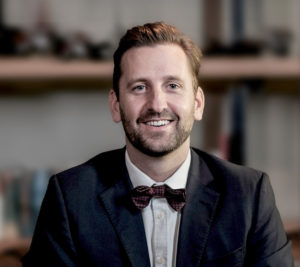
Charles Blaschke, CEO, Taka Solutions
In 2016, the Dubai Supreme Council of Energy (DSCE) joined the Building Efficiency Accelerator (BEA) partnership, launched by the United Nations (UN), to retrofit 30,000 buildings, in order to achieve a 30% reduction in energy consumption by the year 2030. Though the overall sentiment has been positive, the target has been received with mixed reactions.
Charles Blaschke, CEO, Taka Solutions, finds the target to be an ambitious one, though the retrofit movement in the United Arab Emirates is moving at a fast pace. “We will meet the target,” he says. “High goals are bound to lead to an uptake for retrofit projects, and this is a good sign.”
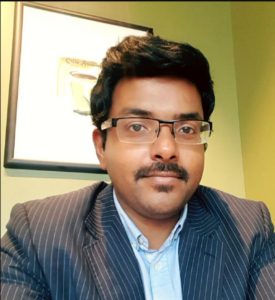
Tharun Thomas, Business Development Manager, Smart4 Power
Tharun Thomas, Business Development Manager, Smart4 Power, highlights that it’s been four years since the initiative was announced. He points out that approximately 200 buildings have been retrofitted so far. “The initiative is bound to have a ripple effect, and we already see other Emirates following in Dubai’s footsteps,” he adds.
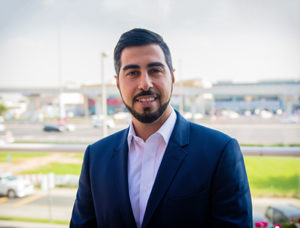
Hassan Younes, Director, Griffin Consultants
Pointing to a current trend, Hassan Younes, Director, Griffin Consultants, says that though there are retrofit projects, building owners might not be completely convinced on why they should invest in retrofitting for energy efficiency, which he sees as an issue that must be addressed.
Offering a global perspective to the scope of retrofit projects in the region, Dr Pablo De Agustin, Senior Researcher, Tecnalia Research and Innovation, says,
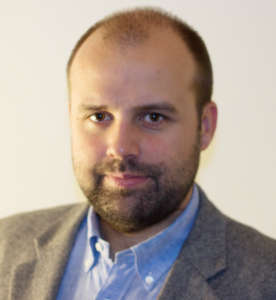
Dr Pablo De Agustin, Senior Researcher, Tecnalia Research and
Innovation
“In global terms, having a 30% target is undoubtedly a positive goal.” However, there must be a plan of action on how best such a target can be achieved, he says.
Responding to this statement is S Krishna Murthy, Deputy Director, Environment Solutions and Consultancy, who points to the region’s principal ESCO, and says: “Etihad ESCO has a clear roadmap on how it will achieve the target. Using a step-by-step approach, they plan on reducing 8-10% of energy consumption by the year 2020, thereafter retrofitting 5,000 buildings before 2021.”
However, Thanveer Hussain, Senior Energy Consultant, Hansa Energy Solutions, foresees financing as the major roadblock to retrofits. “Banks are hesitant to give loans to small- to medium-size projects,” and this, he adds, poses a major challenge to lesser-known entities, who want to retrofit. Banks, he says, tend to lend depending on the worth of the project. “If a project is worth AED 50 million and over, only then will the bank agree to a loan,” Hussain says. Elaborating, Hussain says that for large projects the risk is great because of the investment involved; however, at the same time, the proportion of returns for these projects are also high.
‘Clients must make informed decisions before getting into a retrofit’
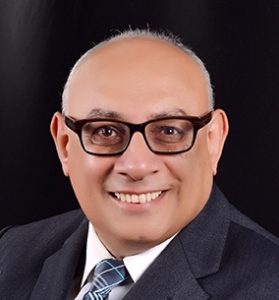
Sam Gouda, President, Creara International
Finance expert, Sam Gouda, President, Creara International, says that there cannot be one particular ESCO model, which is applicable to all clients.
“A common contract with the public sector is guaranteed savings, where the client finances the project, whereas, in the private sector, it’s the shared savings model, i.e. the ESCO and client are in a shared finance partnership,” Gouda explains. However, Hussain adds that whichever model it may be, finance continues to be a concern for clients, who want to retrofit.
Highlighting the business model of his ESCO, Thomas says, “Smart4 Power offers both the guaranteed savings model and the shared savings model.” Adding, he says that, as of today, the ESCO has two public sector projects under the 30% energy efficiency target and has successfully completed 44 retrofit projects in the private sector. The challenge today, he says, is making a successful business case, where the clients understand the need and use of retrofitting. Highlighting Hansa Energy’s business model, Hussain says, “Hansa Energy follows the shared contracting model, where the investment is put in by both the client and the ESCO.” Elaborating, he says that even though it is a shared contracting model, it is more lucrative if the client carries out the complete investment. Today, he adds, investors do not invest blindly; instead, they look at real-time measurements to see whether a retrofit made to a building is worth the investment.
Blaschke, on the other hand, advocates the self-financing model. “A lot of ESCOs encourage the shared savings model, but I believe a true financial infrastructure is having one’s own investment fund,” he asserts. Self-financing, he says, gives an ESCO the ability to take on projects in a matter of days. “If the investment on a project is five million, we pay the entire amount and, later, if the client saves a million a year, we take 70% of the savings for seven years,” he says. Adding, he highlights that today most ESCOs operate on a guaranteed savings model, which he says is a 100% interest partnership. Echoing Blaschke, Murthy asserts that today, one incentive for clients is that ESCOs take care of the financing aspect.
He suggests, “It is the ESCOs duty to make the reliance on funds for a retrofit a non-issue.” Elaborating on the importance and benefit a green fund can bring, Blaschke says: “Because we have a partner who invests with us, we are able to set high goals of deploying AED 200 million in the next four years for retrofit projects in Dubai.” Nothing is easy to achieve, when it comes to handling retrofit projects, he adds, yet ambitious targets and having the right investor helps us to move forward. “So far, we have retrofitted six million square feet of space and have 200 proposals in the pipeline,” he says. “The traditional ESCO model is failing because not many clients care to retrofit for energy efficiency.” And even though a green fund may help, Gouda echoes Blaschke and says that banks are needed only when an ESCO does not have deep pockets. Gouda says, “The client has to provide a collateral and borrow under a guaranteed savings contract, which might mitigate the risk to a certain extent, yet it leaves clients hesitant to go through the process”.
Younes adds, “It is important for a client to consider checks and balances while making an informed decision to know which model will work best and what kind of retrofit the building needs.” A client, he says, must reach out to a consultant to look into the project for a second opinion.”
‘The role of a consultant is essential to a retrofit project’
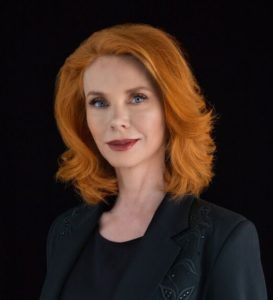
Holley Chant, Executive Director, KEO
Consultants
“I believe that the consulting community has to push for the next wave of innovation in retrofits,” says Holley Chant, Executive Director, KEO Consultants. The onus of keeping people informed on the latest in the retrofit sector, she says, lies with the consultant. “Overall there is a need for outreach, the market needs help in the way they approach projects,” she says. ESCOs are willing to support an organisation, but what the market needs, she says, is a client, who is willing to see a retrofit project through and they will only be open to the prospect when they are informed.
Highlighting a trend, she adds that today, the number one reason why clients end up doing a retrofit is that they have an audit, which tells them that a building is not functioning efficiently and they tend to be more concerned about cost-savings than energy efficiency.
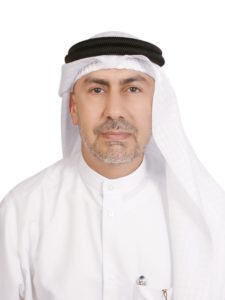
Faisal Ali Rashid, Director of Demand Side Management, DSCE
Faisal Ali Rashid, the Director of Demand Side Management (DSM) at the Dubai Supreme Council of Energy (DSCE), says, “Dubai is the first in the United Arab Emirates to begin a retrofit project. However, in order to move forward, people need to be more aware of the business model followed by ESCOs.” Adding, he says that many buildings today are inefficient and, with Etihad ESCO, clients can choose, which financing model will work in their best interest.
Pointing to a development in the field of awareness, Chant explains that if there’s one benefit the economic slowdown has brought to the retrofit sector, it’s that clients want to save on energy bills and, hence, look for solutions, such as retrofitting. She says, “Clients who thought of developing new buildings are actually considering retrofitting old ones for energy efficiency and cost savings.” She also points to the importance, and growing need, of measuring and verifying a retrofit project after its completion.
‘Measurement and verification is a crucial step post-retrofit’
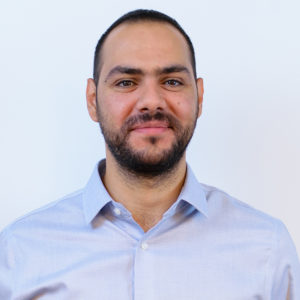
Michael Aghabi,
Sustainability Associate, KEO International Consultants
Measurement and Verification (MNV) is something that comes in at a later stage and yet is essential to any retrofit project, says Michael Aghabi, Sustainability Associate, KEO International Consultants. He says today, the retrofit market needs certified professionals who can carry out MNVs accurately. “The job involves a thorough examination of a building using statistics and cross-examination,” he says. However, he suggests that in order to achieve the 30% energy reduction target by the year 2030, the government must raise the cost of energy. He says, “The higher the price, the more viable ESCO work becomes, and there must be penalties on the excess use and wastage of energy.” However, he says that MNVs can be an expensive affair, and it is the assessor’s job to mitigate the risk, post the completion of a retrofit project. “Cost is sometimes a factor for clients,” he adds and, though the ESCO bears the financial cost, the public sector is the one that will, most likely, opt for an MNV.
Echoing Aghabi, is Hussain, who says, “The uptake of retrofits in the United Arab Emirates makes MNVs more important and relevant.” However, along with the importance of MNVs, Hussain also highlights another challenge. “There is a lack of trained and skilled MNV assessors in the United Arab Emirates,” he says, which is a bad sign. With the increasing number of retrofits, there is a need to assess whether a job has been done well, he says. However, Thomas shares that MNV need not be done by a third-party assessor. “We call in a third-party assessor only if the desired energy savings are not achieved,” he says, as the audits and maintenance are done 100% in-house.
ESCOs in the Middle East have not been as forthcoming as you’d want them to be, Gouda says. One of the issues, he says, is the way an ESCO pitches the case for a retrofit. Elaborating, he highlights the importance of speaking what’s relevant to an organisation’s C-level. He says, “When an ESCO approaches a company, they must look at the issue from a holistic standpoint.” For instance, if it’s a retrofit for a school, you will make the case for an improved learning experience for the children, especially when speaking to C-level authorities in an organisation. “You do not want to be sent to the boiler guy or to the maintenance manager, who has a restricted budget and limited signing authority,” he says. Referring to it as a catch-22 situation, he says that those in C-level positions are devoted to enhancing the working environment and can take the financial decisions necessary.
Feeling extremely positive about the broader goal, Ali Rashid says that along with putting ambitious targets, Etihad ESCO has moved towards a developing market. The model, he adds, is precise in terms of what has been achieved. “I feel extremely positive about the target, and so far we have been able to monitor the progress of buildings,” he says. Referring to the project as one that has a snowball effect, he says the other Emirates, too, are following in Dubai’s footsteps and are pushing for the goal of achieving energy efficiency through retrofits.
Copyright © 2006-2025 - CPI Industry. All rights reserved.